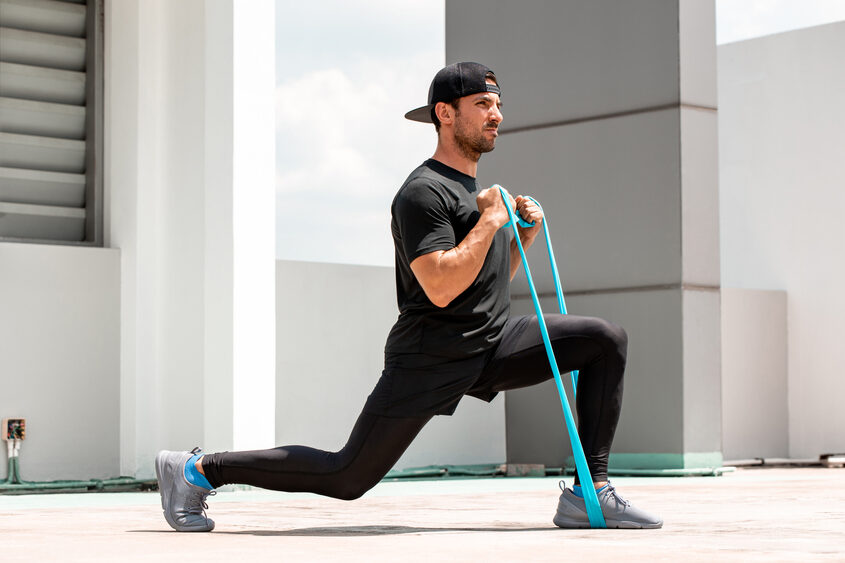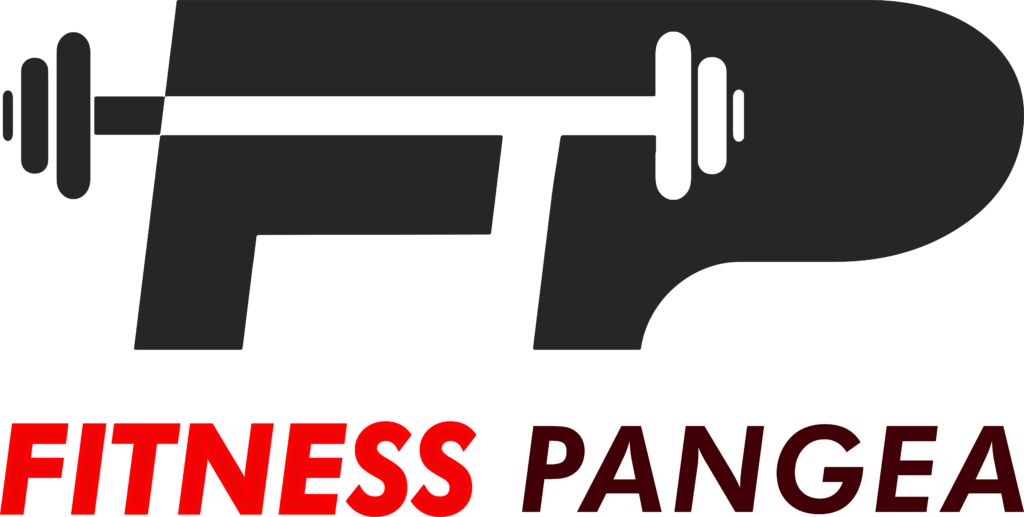Resistance training (also called strength training or weight training) is the utilization of resistance to muscular contraction to build strength, anaerobic endurance and size of skeletal muscles.
Resistance training is focused on the muscles of the body that will work to overcome a resistance force when required. With repeated practices and resistance training, muscles tend to become stronger.
An all-rounded fitness program is inclusive of strength training to enhance joint function, bone density, muscle and ligament strength, along with aerobic exercise to improve your heart and lung fitness, flexibility and balance exercises.
Varying your progressive resistance training program every six to eight weeks to maintain improvement.
Variables that can impact on your results include:
- Sets.
- Repetitions.
- Exercises undertaken.
- Intensity (weights used).
- Frequency of sessions.
- Rest between sets.
If you vary and review your resistance training program on the basis of the number of repetitions and sets performed, exercises conducted and weights used then you will be able to rightly maintain the strength gains.

Examples of resistance training
There are many ways you can strengthen your muscles, whether at home or the gym.
Different types of resistance training include:
- Free weights – basic strength training tools like dumbbells and barbells.
- Medicine balls/sand bags – like weighted balls or bags.
- Weight machines – devices that are inclusive of adjustable seats attached with handles to weights or hydraulics.
- Resistance bands – like giant rubber bands – extending the provision of resistance when stretched. They are portable and even adaptable to most of the workouts. The bands provide continuous resistance throughout the movements.
- Body weight – which can be used for squats, push-ups, etc. Using your own body weight is reasonable and convenient, especially while travelling or working.
Health benefits of resistance training
Physical and mental health benefits that can be achieved through resistance training include:
- Improved muscle strength and tone – to protect your joints from injury.
- Maintenance of flexibility and balance that can help you remain independent as you age.
- May help reduce or prevent cognitive decline in older people.
- Greater stamina – as you grow stronger, you won’t get tired as easily.
- Prevention or control of chronic conditions such as diabetes, heart disease, arthritis, back pain, depression and obesity.
- Pain management.
- Improved mobility and balance.
- Improved posture.
- Decreased risk of injury.
- Increased bone density and strength and reduced risk of osteoporosis.
- Improved sense of wellbeing – resistance training may boost your self-confidence, and improve your body image and your mood.
- Improved sleep and avoidance of insomnia.
- Increased self-esteem.
- Enhanced performance of everyday tasks.
Basic principles of resistance training
Resistance training consists of various components. Basic principles include:
- Program – your overall fitness training program encompasses various exercise types such as aerobics, flexibility and strength training and balance maintaining exercises.
- Weight – different kinds of weights or other types of resistance
- Exercise – any particular movement, for example a calf-raise, that is specially curated to strengthen group of muscles or particular muscle.
- Repetitions or reps – refers to the number of times you continuously repeat each exercise in a set.
- Set – that is a group of repetitions performed without resting, for example, two sets of squats by 15 reps would mean doing 15 squats then rest muscles before doing another round of 15 squats.
- Rest – taking rest between sets. Rest periods vary depending on the kind of intense exercises being undertaken.
- Progressive overload principle – to continuing gaining benefits, doing strength training activities need to be done to the point where it’s hard for you to do another repetition. Also, regular adjustments to the training variables, such as frequency, duration, exercises for each muscle group, number of exercises for each muscle group, sets and repetitions, help to make sure you progress and improve.
- Recovery – muscle needs time to repair and adapt after a workout. A good rule of thumb is to rest the muscle group for up to 48 hours before working the same muscle group again.
Resistance training for beginners
Pre-exercise screening is used to identify people with medical conditions that may put them at a higher risk of experiencing a health problem during physical activity. It is a filter or safety net to help decide if the potential benefits of exercise outweigh the risks for you.
Print a copy of AU active’s adult pre-exercise screening tool and discuss it with your doctor, allied health or exercise professional.
The Australian Physical Activity and Sedentary Behaviour Guidelines recommend that you undertake strength building activities at least two days a week. These activities should be able to work all the major muscle groups of your body (legs, hips, back, chest, core, shoulders, and arms).
Starting resistance training
It is significant to pay attention to safety and form in order to reduce the risk of injury. An AUSactive registered professional can help you develop a safe and effective program.
To start, a typical beginner’s strength training program involves:
- Eight to ten exercises that work the major muscle groups of the body and are performed two to three times per week.
- Beginning with one set of each exercise, comprising as few as eight repetitions (reps), no more than twice per week.
Your aim is to gradually increase to two to three sets for each exercise – comprising eight to 12 reps, every second or third day. Once you can comfortably complete 12 reps of an exercise, you should look at progressing further.
Warming up before resistance training
Warm up your body before starting your strength training exercises. Start with light aerobic exercise (such as walking, cycling or rowing) for around five minutes in addition to a few dynamic stretches. Dynamic stretching involves slow controlled movements through the full range of motion.
Advanced resistance training
To get the most gain from resistance training, progressively increase the intensity of your training according to your experience and training goals. This may mean increasing the weight, changing the duration of the contraction (the time during which you sustain holding the weight reducing rest time or increasing the volume of training.
Once you’ve been doing resistance training regularly for four to six weeks, you can progressively increase the intensity of your training as your muscles adapt.
Research suggests that expert supervision and instruction may improve your results as it will ensure you practice proper technique and follow safety principles. If you experience any discomfort or pain, contact a health professional before progressing with your program.
Repetitive maximum (RM) and resistance training
The best way to develop muscle strength is for the muscle to contract to its maximum potential at any given time – maximal voluntary contraction (MVC). In resistance training, MVC is measured by the term XRM, where RM is the maximum number of repetitions that can be completed with a given resistance or weight. X is the number of times a certain weight can be lifted before the muscle fatigues.
It is the RM range that determines what type of improvements the muscles will make. The optimal range for improving muscle strength is 8–12 RM for a beginner and 2–6 RM for the more advanced.
For example, the formula 7RM means the person can lift the weight (let’s say 50 kg) seven times before the muscles are too fatigued to continue. Higher weights mean lower RM – for example, the same person could possibly lift a 65 kg weight, but fewer than seven times.
Lower weights typically result in a higher RM – for example, the same person could lift a 35 kg weight about 12 times before muscle fatigue sets in. MVC principles can help you gain the most benefit from your workouts. A good rule of thumb is to only increase the weight between two and 10 per cent once you can comfortably do two repetitions above the maximum.
Applying MVC to meet advanced resistance training goals
The principles of strength training involve manipulation of the number of repetitions (reps), sets, tempo, exercises and force to overload a group of muscles and produce the desired change in strength, endurance, size or shape.
Specific combinations of reps, sets, exercises, resistance and force will determine the type of muscle development you achieve. General guidelines, using the RM range, include:
- Muscle power: 1 – 5 RM per set, performed explosively.
- Muscle strength: 1 – 6 RM per set, controlled.
- Muscle size (hypertrophy): 6 – 12 RM per set, controlled.
- Muscle endurance: 12 – 15 or more RM per set, controlled.

Muscle recovery during advanced resistance training
Muscle needs time to repair and grow after a workout. Not giving your muscles enough time to recover means they will not get bigger or stronger. A good rule of thumb is to rest the muscle group for at least 48 hours.
Once you have sufficient experience in resistance training, and with the support of a qualified allied health or exercise professional, you might like to consider a split program. For example, you could work your upper body on Mondays and Fridays, and your lower body on Wednesdays and Sundays.
Gaining strength from advanced resistance training
Most beginners experience a rapid increase in strength, followed by a plateau or levelling-out of strength improvements. After that, gains in muscle strength and size are hard-earned.
When you start resistance training, most of your initial increase in strength is due to a phenomenon called neural adaptation. This means that the nerves servicing the muscles change their behaviour. The nerves are thought to fire more frequently (prompting increased muscle contraction) and more motor units are recruited to perform the contraction (a motor unit is the nerve cell and its associated muscle fibres). This means you become stronger, but the muscles remain the same size – you’ve hit the plateau.
In time, muscle cells respond to continuous resistance training by increasing in size (hypertrophy), so don’t be discouraged by reaching the plateau – it is actually an encouraging sign that gains in muscle size are soon to follow. Various techniques may help you shorten the plateau period.
Varying your workouts can help you push past a plateau. The theory of variation is that you can coax growth and strength from your muscles by surprising them with a range of different stresses. The muscles will respond in size and strength as they are forced to adapt.
Be guided by your gym instructor or personal trainer, but suggestions include:
- Increase the number of repetitions.
- Increase your workout by 10 or 15 minutes.
- Increase the frequency of workouts, keeping in mind that each muscle needs at least 48 hours of recovery time. Once you are more experienced, you may like to consider splitting body parts over the different days of the week – for example, chest, shoulders and triceps in session one, back, biceps and abdominal muscles in session two, and legs in session three.
- Switch to different exercises – for example, focus on exercises that use multiple muscle groups and that are functional or specific in nature, meaning that they relate to activities of daily living or sporting requirements.
- Increase the weight by about five to 10 per cent.
- Cross-train with other activities such as swimming or running.
- Change your workout about every four to eight weeks to keep your muscles guessing.
In the end, Improving the strength and endurance of your muscles isn’t just for show, it also can help keep your muscles healthy and improve your quality of life. Muscle strength and endurance are important in your daily life, especially as you get older. Resistance training can help your muscles remain healthy and functional.



